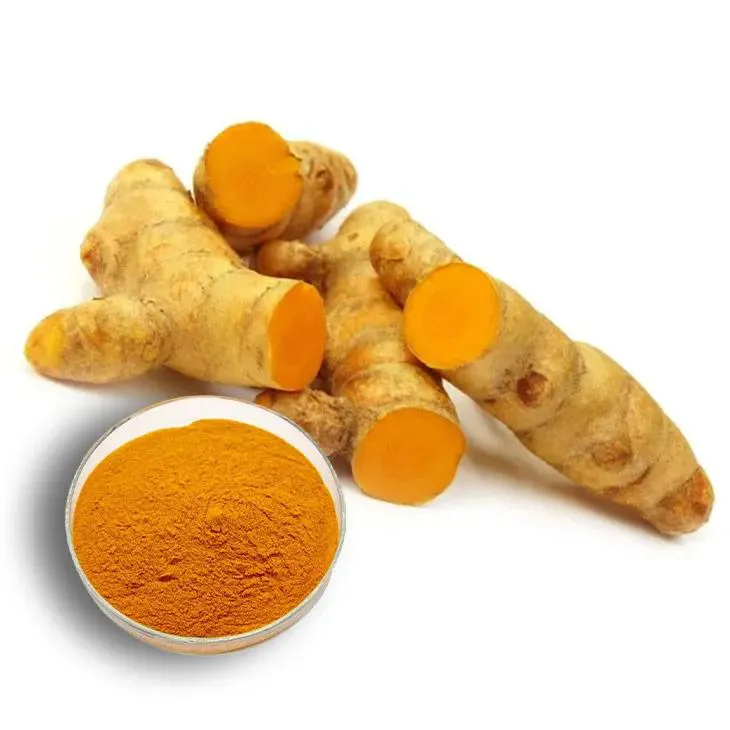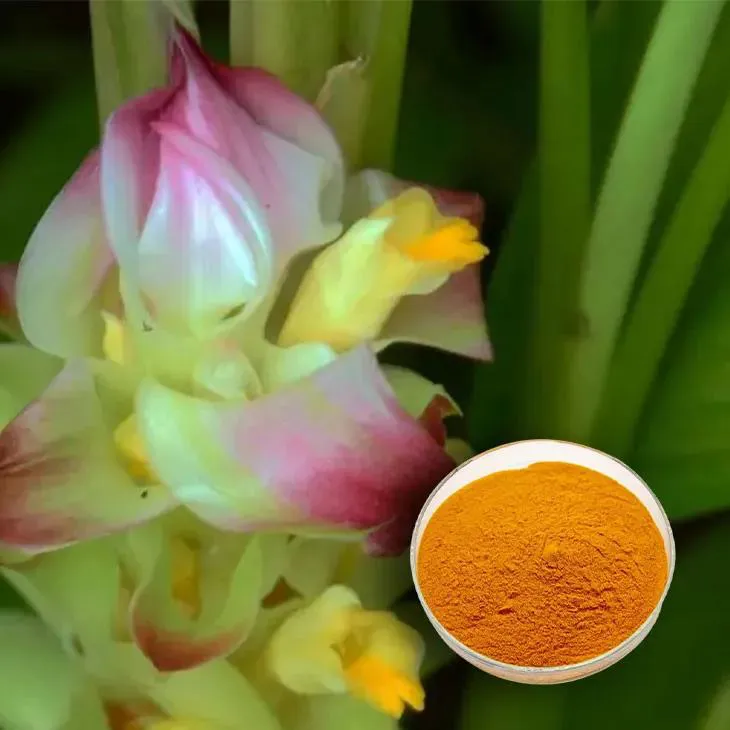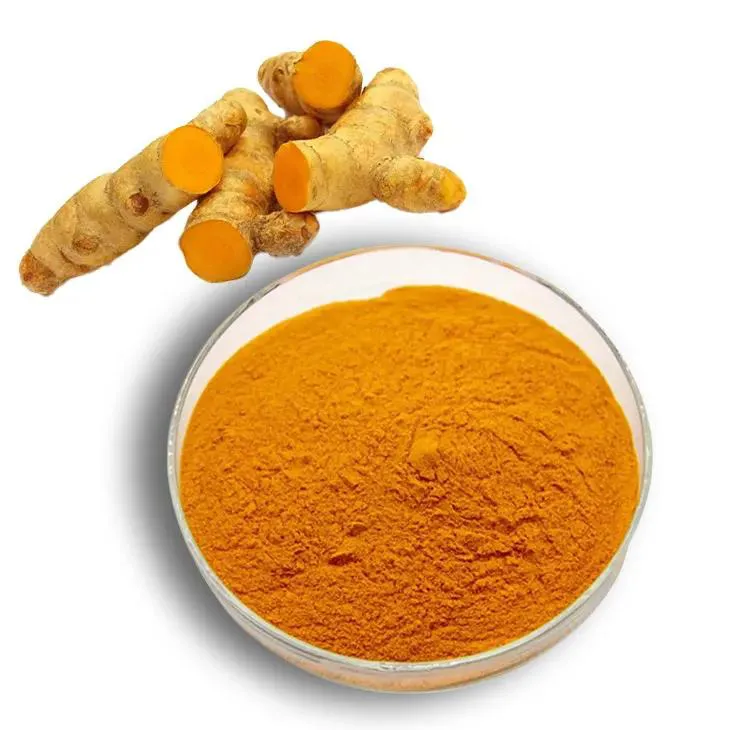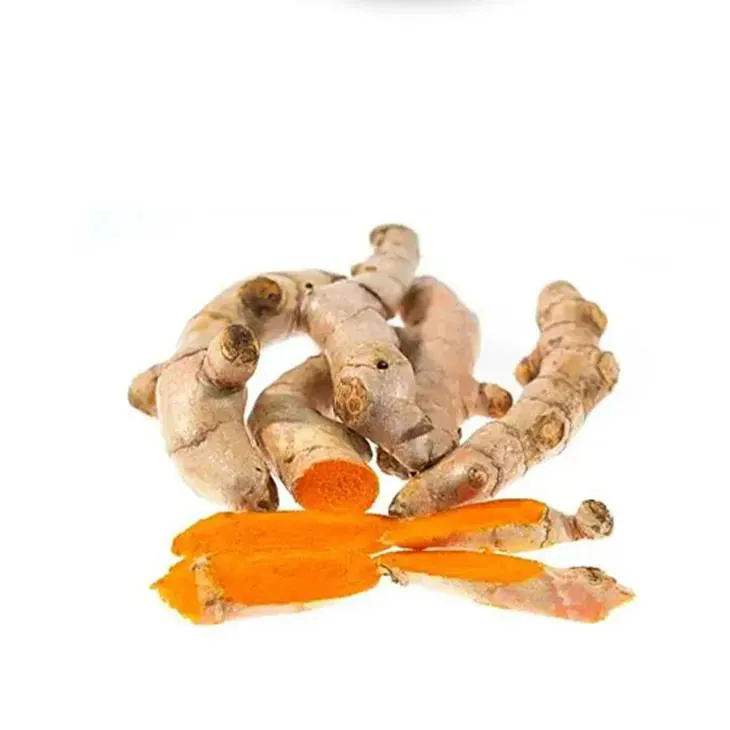- 0086-571-85302990
- sales@greenskybio.com
Green Gold: The Environmental Impact of Curcumin Extraction in India
2024-08-06

1. Introduction
Curcumin, often referred to as "Green Gold," has been an integral part of India's cultural and economic fabric for centuries. India is one of the largest producers of turmeric, from which Curcumin is extracted. The Curcumin extraction industry in India has seen significant growth in recent years, driven by the increasing global demand for curcumin's various health benefits. However, this growth has not been without environmental consequences. This article aims to explore the environmental footprint of Curcumin Extraction in India, highlighting key areas such as energy consumption, chemical usage, and impacts on local ecosystems. It will also discuss the role of regulations and community initiatives in promoting more sustainable extraction practices.

2. The Curcumin Extraction Process
2.1 Traditional Methods
Traditionally, Curcumin Extraction in India has been carried out using simple and rudimentary methods. Turmeric rhizomes are first harvested and then dried. Crude extraction often involves grinding the dried rhizomes into a powder and then using solvents like water or ethanol to extract the curcumin. These traditional methods, while being relatively low - tech, have their own environmental implications. For example, the drying process, if done using firewood, can contribute to deforestation, especially in areas where there is a lack of alternative energy sources.
2.2 Modern Industrial Methods
In the modern industrial setting, more advanced techniques are employed for curcumin extraction. Supercritical fluid extraction (SFE) using carbon dioxide as a solvent has gained popularity due to its ability to produce a high - purity curcumin extract. However, this method requires significant energy input to maintain the supercritical state of carbon dioxide. Another common method is solvent extraction using organic solvents such as hexane. Hexane extraction is efficient but poses risks due to the toxicity of hexane. If not properly managed, hexane can be released into the environment, contaminating air, soil, and water.
3. Energy Consumption in Curcumin Extraction
3.1 Energy Sources
The energy consumption in curcumin extraction varies depending on the method used. In traditional small - scale operations, energy sources can be as simple as firewood or coal for drying and heating during extraction. These sources are often not very efficient and contribute to greenhouse gas emissions. In modern industrial plants, electricity is the main energy source. However, in India, a significant portion of electricity is still generated from coal - fired power plants, which again has a negative environmental impact in terms of carbon dioxide emissions.
3.2 Energy - Efficiency Measures
There is a need for the curcumin extraction industry to adopt more energy - efficient measures. This could include the use of solar energy for drying processes, especially in regions with abundant sunlight. Some companies have started to explore the use of biomass energy from agricultural waste as an alternative energy source for extraction. Additionally, improving the insulation of extraction equipment and optimizing the extraction process itself can reduce the overall energy consumption.
4. Chemical Usage and Its Environmental Impact
4.1 Solvents
As mentioned earlier, solvents play a crucial role in curcumin extraction. Organic solvents like hexane are widely used in industrial extraction processes. Hexane is volatile and can easily evaporate into the atmosphere, contributing to air pollution. Moreover, if hexane - contaminated wastewater is not properly treated, it can contaminate water bodies, affecting aquatic life. Ethanol is another commonly used solvent, which is considered more environmentally friendly compared to hexane. However, large - scale production of ethanol for extraction purposes also requires significant energy input and agricultural resources.
4.2 Chemical Additives
In addition to solvents, chemical additives are sometimes used in curcumin extraction to improve the extraction yield or the quality of the extract. For example, some acids or bases may be added to adjust the pH of the extraction medium. However, these chemical additives can also have a negative impact on the environment if they are not properly disposed of. They can contaminate soil and water, and may also have an impact on the local micro - ecosystems.
5. Impact on Local Ecosystems
5.1 Deforestation
The demand for turmeric cultivation, which is the raw material for curcumin extraction, can lead to deforestation in some areas. Farmers may clear forests to make way for turmeric fields. Deforestation has a cascading effect on the local ecosystem. It can lead to soil erosion, as the tree roots that hold the soil in place are removed. This, in turn, can affect water quality in nearby rivers and streams, as sediment runoff increases. Additionally, deforestation reduces the habitat for many wildlife species, leading to a decline in biodiversity.
5.2 Water Usage and Pollution
Curcumin extraction processes require a significant amount of water. In areas where water is scarce, this can put a strain on local water resources. Moreover, the wastewater generated from extraction, if not treated properly, can contain solvents, chemical additives, and other pollutants. This can contaminate water bodies, making the water unfit for human consumption and harmful to aquatic organisms.
5.3 Impact on Biodiversity
The expansion of turmeric cultivation and the associated curcumin extraction activities can also have an impact on biodiversity. Monoculture of turmeric, which is often the case in large - scale commercial farming, reduces the variety of plant species in an area. This can disrupt the ecological balance as different plant species play different roles in the ecosystem, such as providing food and shelter for insects and other animals. The use of pesticides and fertilizers in turmeric cultivation can also harm non - target organisms, further reducing biodiversity.6. Regulations and Their Effectiveness
6.1 Existing Environmental Regulations
India has a set of environmental regulations that are relevant to curcumin extraction. For example, the Water (Prevention and Control of Pollution) Act, 1974, and the Air (Prevention and Control of Pollution) Act, 1981, are aimed at controlling water and air pollution respectively. The Hazardous and Other Wastes (Management and Transboundary Movement) Rules, 2016, also regulate the handling and disposal of hazardous waste, which includes some of the chemicals used in curcumin extraction. However, the enforcement of these regulations in the curcumin extraction industry has been a challenge.
6.2 Challenges in Regulation Enforcement
One of the main challenges in enforcing environmental regulations in the curcumin extraction industry is the large number of small - scale producers. These small - scale producers may not have the resources or the awareness to comply with all the regulations. Additionally, the lack of proper monitoring infrastructure in some remote areas where curcumin extraction takes place makes it difficult to ensure compliance. There is also a lack of coordination between different regulatory agencies, which can lead to gaps in enforcement.7. Community Initiatives for Sustainable Extraction
7.1 Organic Farming Initiatives
Some local communities in India have started organic farming initiatives for turmeric cultivation. Organic farming reduces the use of synthetic pesticides and fertilizers, which are harmful to the environment. This not only helps in protecting the local ecosystems but also improves the quality of the turmeric and, ultimately, the curcumin extract. Organic farming also promotes soil health and biodiversity, as it encourages the use of natural fertilizers such as compost and manure.
7.2 Community - based Waste Management
In some areas, communities have come together to manage the waste generated from curcumin extraction. This includes treating wastewater to make it safe for disposal or reuse. By taking matters into their own hands, these communities are reducing the environmental impact of curcumin extraction at the local level. They are also creating awareness among the local population about the importance of environmental protection in the context of curcumin extraction.8. Conclusion
The curcumin extraction industry in India has a significant environmental footprint, with issues ranging from energy consumption and chemical usage to impacts on local ecosystems. While there are existing regulations to address these environmental concerns, their enforcement needs to be improved. Community initiatives also play an important role in promoting more sustainable curcumin extraction practices. To ensure the long - term viability of the curcumin extraction industry in India, it is essential to find a balance between economic growth and environmental protection. This will require the adoption of more sustainable extraction methods, better enforcement of regulations, and the continued support and expansion of community - based environmental initiatives.
FAQ:
What are the main energy sources used in curcumin extraction in India?
Typically, in curcumin extraction in India, traditional energy sources like coal or firewood might be used in some small - scale operations. However, in larger and more modern facilities, electricity may be the main energy source. The use of different energy sources can impact the overall environmental footprint. For example, coal and firewood combustion releases pollutants such as particulate matter and greenhouse gases, while electricity generation also has its own environmental implications depending on the source (e.g., if it is from coal - fired power plants).
How do chemicals used in curcumin extraction affect the environment?
Chemicals used in curcumin extraction, such as solvents, can have several environmental impacts. Some solvents may be volatile organic compounds (VOCs) that can contribute to air pollution. If these chemicals are not properly managed, they can contaminate soil and water sources. For instance, if there are spills during the extraction process, the chemicals can seep into the ground and reach groundwater, potentially harming aquatic ecosystems and making the water unfit for human and animal consumption.
What is the impact of curcumin extraction on local water resources?
The extraction process may require a significant amount of water. This water usage can put stress on local water resources, especially in areas where water is already scarce. Additionally, as mentioned before, if chemicals are not properly disposed of, they can contaminate water sources. The wastewater from curcumin extraction may contain residues of solvents, pigments, and other substances, which can change the water quality and affect aquatic life. Some substances in the wastewater might also be difficult to biodegrade, leading to long - term pollution problems.
How do regulations in India control the environmental impact of curcumin extraction?
Indian regulations play a crucial role in controlling the environmental impact of curcumin extraction. There are environmental laws that govern aspects such as waste management, chemical usage, and emissions. For example, industries are required to obtain proper permits for their operations, which include meeting certain environmental standards. These regulations ensure that companies take measures to reduce pollution, such as installing proper waste treatment facilities and controlling emissions. They also encourage the use of more environmentally friendly extraction methods through incentives and penalties.
What are the community initiatives in India to make curcumin extraction more environmentally friendly?
Community initiatives in India are diverse. Some local communities may promote sustainable farming practices for turmeric (the source of curcumin), such as organic farming, which reduces the use of chemical fertilizers and pesticides. Communities may also be involved in awareness - raising campaigns about the environmental impacts of curcumin extraction. Additionally, some community - based organizations may work with extraction companies to promote the reuse and recycling of water and the proper disposal of waste, or encourage the use of renewable energy sources in the extraction process.
Related literature
- Environmental Impact Assessment of Curcumin Production in India"
- "Sustainable Curcumin Extraction: A Review of Indian Practices"
- "The Role of Regulations in Greening Curcumin Extraction in India"
- ▶ Hesperidin
- ▶ citrus bioflavonoids
- ▶ plant extract
- ▶ lycopene
- ▶ Diosmin
- ▶ Grape seed extract
- ▶ Sea buckthorn Juice Powder
- ▶ Beetroot powder
- ▶ Hops Extract
- ▶ Artichoke Extract
- ▶ Reishi mushroom extract
- ▶ Astaxanthin
- ▶ Green Tea Extract
- ▶ Curcumin Extract
- ▶ Horse Chestnut Extract
- ▶ Other Problems
- ▶ Boswellia Serrata Extract
- ▶ Resveratrol Extract
- ▶ Marigold Extract
- ▶ Grape Leaf Extract
- ▶ blog3
- ▶ blog4
- ▶ blog5
-
Dandelion Leaf Extract
2024-08-06
-
Bayberry Extract
2024-08-06
-
Centella Asiatica Extract
2024-08-06
-
Thunder God Vine Extract
2024-08-06
-
Dan Shen Root Extract/Salvia Root Extract
2024-08-06
-
Nettle leaf extract
2024-08-06
-
Hawthorn powder
2024-08-06
-
Cat Claw Extract
2024-08-06
-
Beta Carotene
2024-08-06
-
Lily extract
2024-08-06





















